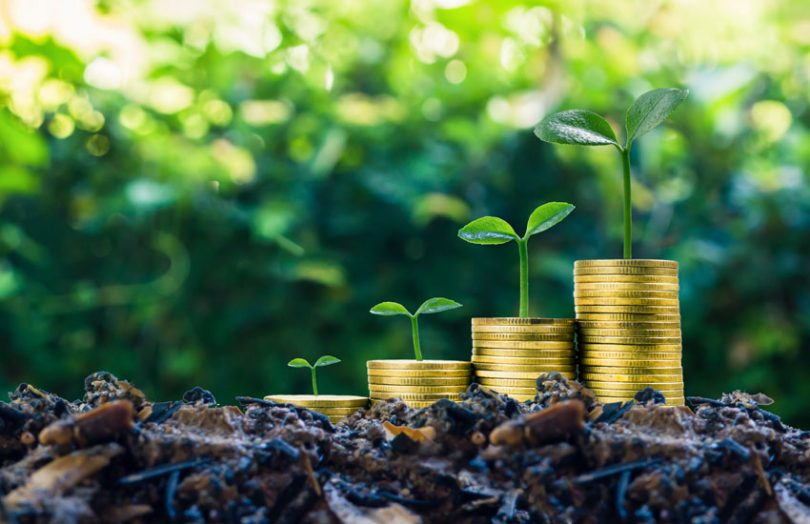The MENA sustainable bond market has seen an impressive surge in the first half of 2025, with Saudi Arabia and the United Arab Emirates (UAE) leading the way. Together, they contributed a record-breaking $9.47 billion in sustainable bond issuances, reinforcing their roles as the key drivers of green finance in the region.
This strong performance highlights the region’s growing commitment to environmental, social, and governance (ESG) goals, as governments and corporations alike seek to diversify funding sources while supporting climate and sustainability objectives.
MENA sustainable bond market: A new era of green finance
The MENA sustainable bond market has evolved rapidly over the past few years, and 2025 has so far marked a turning point. In just six months, Saudi Arabia and the UAE alone raised $9.47 billion, accounting for nearly 70% of the region’s total sustainable debt issuance during this period.

This remarkable figure reflects both countries’ strategic visions. Saudi Arabia’s Vision 2030 and the UAE’s Net Zero 2050 initiative have placed sustainability at the heart of national economic strategies. As a result, sovereigns, state-owned enterprises, and private sector players are actively tapping into sustainable finance to fund green projects, energy transition initiatives, and social development programs.
Why are Saudi Arabia and the UAE leading?
Visionary national agendas

Saudi Arabia and the UAE have both set ambitious environmental and economic diversification targets. For Saudi Arabia, Vision 2030 aims to reduce its dependence on oil, develop public service sectors, and create a more sustainable economy. The kingdom’s recent issuance of green sukuks (Islamic bonds) to finance renewable energy and green infrastructure projects has gained significant investor attention.

Meanwhile, the UAE continues to reinforce its reputation as a regional sustainability pioneer. The UAE’s strong push toward clean energy, demonstrated through projects like Masdar City and the world’s largest single-site solar park (Mohammed bin Rashid Al Maktoum Solar Park), has positioned the country as a magnet for ESG-focused investments.
Investor appetite for green assets
Global and regional investors are increasingly prioritizing ESG considerations. Sustainable bonds offer an attractive opportunity to invest in instruments that not only yield financial returns but also contribute to environmental and social objectives. The strong performance of these bonds in secondary markets further boosts investor confidence.
Regulatory support and incentives
Both Saudi Arabia and the UAE have introduced supportive regulatory frameworks that encourage sustainable financing. Saudi Arabia’s Capital Market Authority (CMA) and the UAE Securities and Commodities Authority have issued guidelines and incentives to foster transparency and attract green issuers and investors.
Breakdown of H1 2025 sustainable bond issuances
According to regional financial analysts, Saudi Arabia’s sustainable bond issuances in H1 2025 reached approximately $5.3 billion, while the UAE followed closely at $4.1 billion. These issuances include a combination of green bonds, social bonds, and sustainability-linked bonds.
Some notable transactions include:
- Saudi Arabia’s sovereign green sukuk: A $2 billion issuance to support renewable energy and energy efficiency projects.
- Saudi Aramco’s green bond: Worth $1.5 billion, focusing on clean energy initiatives and carbon reduction technologies.
- UAE’s federal green bond: Approximately $1.8 billion, supporting climate-resilient infrastructure and sustainable transportation.
- ADNOC’s sustainability-linked bond: Around $900 million, tied to the company’s emission reduction targets.
Impact on the regional economy
The surge in the MENA sustainable bond market has broader implications beyond raising capital. It supports job creation in emerging sectors, stimulates innovation, and helps diversify economies traditionally reliant on hydrocarbons.
Moreover, it signals to international markets that the MENA region is serious about addressing climate change and achieving carbon neutrality. This commitment is crucial, as global investors increasingly scrutinize sustainability credentials before allocating capital.
Challenges remain
While the growth is encouraging, the market still faces challenges:
- Standardization issues: A lack of unified regional standards for sustainable finance sometimes causes confusion among investors and issuers.
- Limited ESG data: Transparency and reliable reporting are still developing, making it difficult for investors to fully assess environmental and social impacts.
- Market education: There is a need for more awareness among corporate issuers about the benefits and requirements of sustainable bonds.
However, regional regulators and financial institutions are working collaboratively to address these issues and improve market maturity.
Global context: MENA catching up
Globally, sustainable debt markets have already surpassed $1 trillion in annual issuances. Europe and North America remain dominant, but the MENA region is catching up fast.
The $9.47 billion raised by Saudi Arabia and the UAE in just half a year signals strong momentum and a willingness to integrate with global green finance standards. This trajectory aligns with growing commitments to international climate agreements, such as the Paris Agreement, which both countries have endorsed.
What’s driving future growth?
Upcoming mega projects
Both Saudi Arabia and the UAE have announced ambitious mega projects that will require substantial sustainable financing, including:
- Saudi Arabia’s NEOM — the futuristic smart city powered entirely by renewable energy.
- The UAE’s ongoing investments in hydrogen production and clean energy export infrastructure.
- The Red Sea Project and Amaala in Saudi Arabia, focused on regenerative tourism and environmental protection.
These projects are expected to drive further sustainable bond issuances, creating a steady pipeline for investors.
Private sector engagement
Beyond government and state-owned entities, private companies are increasingly stepping into the sustainable bond market. Real estate developers, energy firms, and large industrial players are realizing the reputational and financial benefits of ESG financing.
Regional cooperation and knowledge sharing
Another promising trend is the rise in cross-border collaboration within the MENA region. For example, the Gulf Cooperation Council (GCC) countries are exploring joint green finance frameworks to streamline issuance processes and improve market depth.
Knowledge-sharing initiatives, including regional green finance conferences and investor roadshows, have helped demystify sustainable finance concepts and promote best practices.

Technology’s role in strengthening the market
Fintech and digital innovations are playing a critical role in supporting the MENA sustainable bond market. Platforms that provide real-time ESG data, blockchain-based green bond verification, and AI-driven impact measurement tools are becoming increasingly important.
These technologies can help improve transparency, build trust, and enhance investor engagement, thereby accelerating the adoption of sustainable bonds across the region.
A look at investor perspectives
Investors are particularly drawn to the region’s commitment to long-term sustainability plans. As traditional fossil fuel economies transition, investors view these bonds as an opportunity to be part of a transformative journey.
Furthermore, the region offers attractive yields compared to some saturated markets in Europe or North America. When combined with strong sovereign backing, these characteristics make MENA sustainable bonds an increasingly appealing asset class.
Future outlook: Strong growth ahead
Analysts forecast that the MENA sustainable bond market could exceed $20 billion in annual issuances within the next two years if current momentum continues. Saudi Arabia and the UAE are likely to remain leaders, but other nations, such as Qatar, Egypt, and Morocco, are also planning to scale up their green finance activities.
Governments across the region are expected to launch new incentive programs, develop clearer ESG guidelines, and promote capacity building among market participants. This will further strengthen the foundation for sustained growth.
Conclusion: A turning point for MENA finance
The first half of 2025 has set a new benchmark for the MENA sustainable bond market, with Saudi Arabia and the UAE’s leadership proving decisive. The record $9.47 billion issuance is not just a milestone in numbers; it reflects a deeper shift toward sustainability-driven economic growth.
As the world moves toward net-zero goals, the MENA region’s proactive approach positions it as an emerging hub for green finance. With continued regulatory support, investor appetite, and technological advancements, the market’s future looks bright — and green.
Do follow UAE Stories on Instagram
Read More: Wyndham Hotels, Cygnett unveil exciting expansion in South Asia














